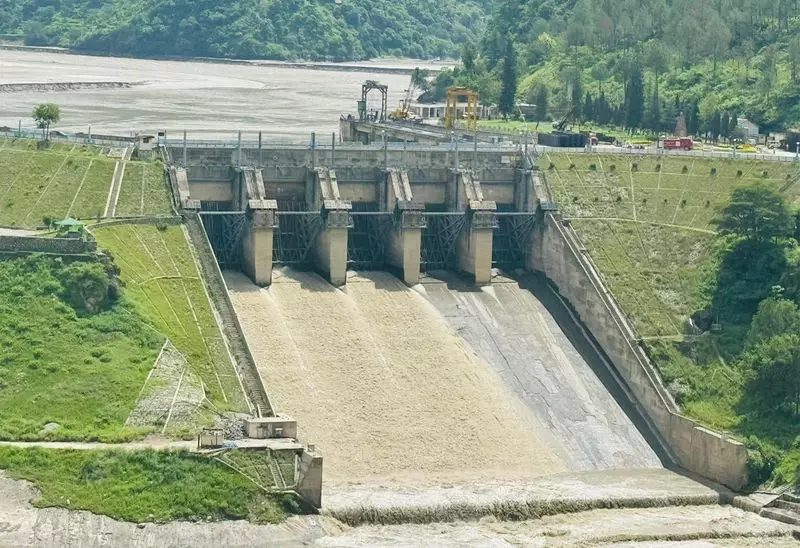
The Pandoh Dam in Mandi district of Himachal Pradesh is set to release excess water as reservoir levels have risen significantly following the closure of a key diversion tunnel. This development has prompted authorities to issue urgent safety warnings for residents and travelers along the Beas River.
Rising Water Levels Prompt Precautionary Measures
The water level in Pandoh Dam reached 787.65 meters on Tuesday morning, dangerously close to the reservoir's maximum capacity of 788.50 meters. This rapid increase occurred after the National Hydroelectric Power Corporation (NHPC) closed the Pandoh-Baggi diversion tunnel for essential maintenance work.
Officials confirmed that the excess water would be released into the Beas River through the dam's spillways. The decision comes as a necessary precaution to prevent potential overflow and maintain the structural integrity of the dam infrastructure.
Safety Alerts Issued for Riverbank Areas
Local authorities have issued strict warnings to residents living near the banks of the Beas River. People have been advised to avoid the riverbanks completely and refrain from any activities in the riverbed areas until the water release operation concludes.
The alert extends to travelers and commuters using roads and bridges that cross the Beas River. Motorists and pedestrians are being cautioned to exercise extreme care when approaching river crossings in the affected regions.
Maintenance Work Triggers Water Accumulation
The current situation developed after NHPC authorities closed the Pandoh-Baggi diversion tunnel to conduct crucial maintenance operations. This tunnel normally diverts water from the Pandoh Dam to the Dehar Power House, but its temporary closure has caused water to accumulate rapidly in the main reservoir.
The maintenance work is part of routine infrastructure upkeep essential for ensuring the long-term operational safety of the hydroelectric project. However, the timing and duration of the tunnel closure have created challenging water management circumstances that require controlled water release.
Local administration officials are closely monitoring the situation and coordinating with NHPC authorities to manage the water release in a controlled manner that minimizes risks to downstream communities while maintaining necessary safety protocols for the dam structure.





